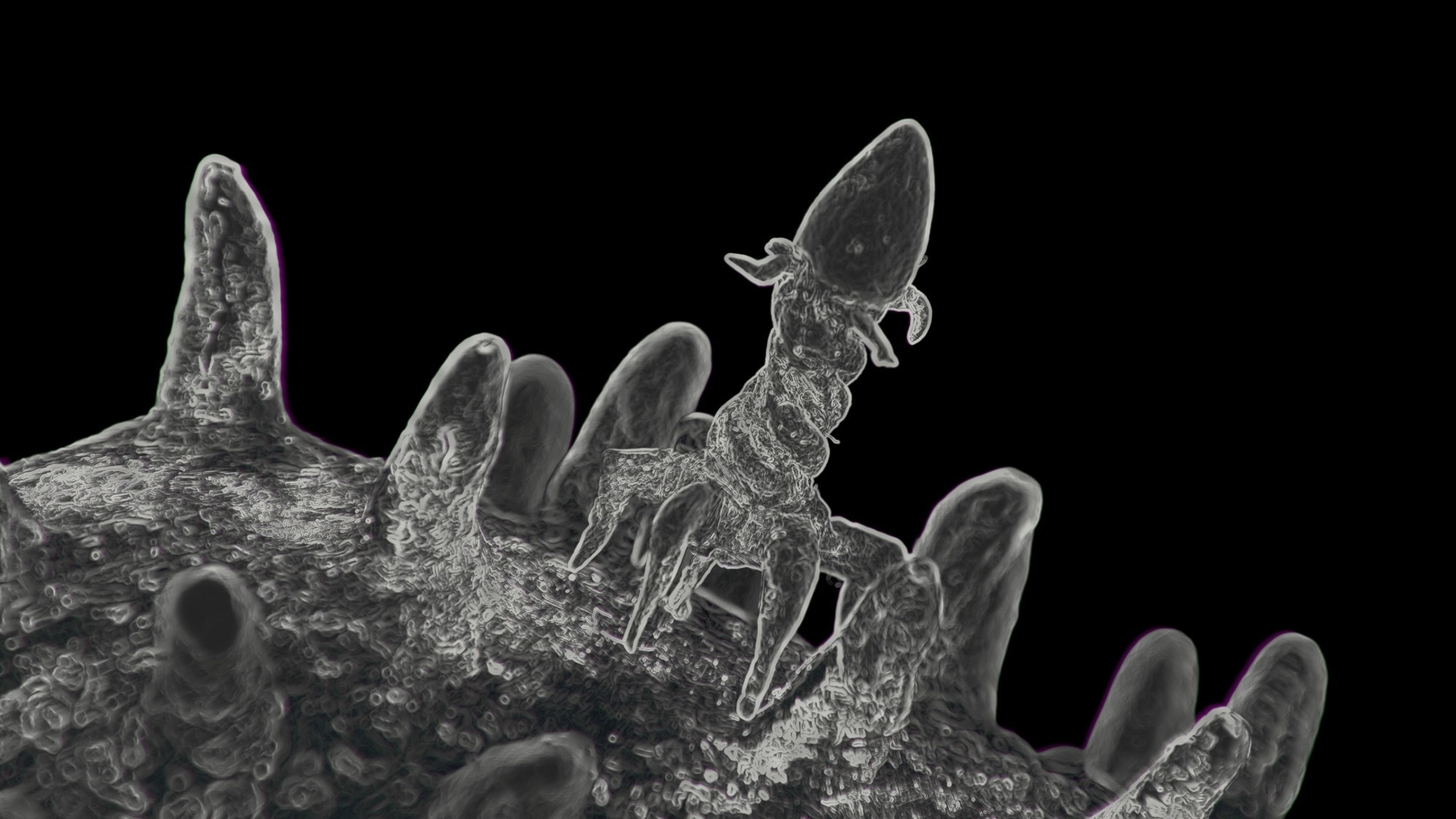Bacteriophages — viruses that infect bacteria — are locked in a constant arms race with their microbial hosts. A family of phages known as jumbo phages have evolved a remarkable strategy of building a protein shell around their deoxyribonucleic acid (DNA), forming a “phage nucleus” that protects their genetic material.
A recent study by a research team from the University of California, published in Nature, has unraveled how specific phage proteins coordinate the selective import of other proteins into this nucleus.
They discovered a core system of import factors that allow protein transport into the phage nucleus, shedding light on a unique biological transport mechanism.
 Study: Multi-interface licensing of protein import into a phage nucleus. Image Credit: shoma81/Shutterstock.com
Study: Multi-interface licensing of protein import into a phage nucleus. Image Credit: shoma81/Shutterstock.com
Background
Cells, across all life forms, carefully regulate the movement of molecules to maintain order and function. Eukaryotic cells achieve this by using nuclear membranes with pores that selectively transport proteins into the nucleus. Until recently, this kind of compartmentalization was thought to be unique to eukaryotes.
However, certain bacteriophages have been found to create their protein-based nucleus-like compartments during infection.
These jumbo phages, especially the ΦKZ-like group, construct a protective shell around their DNA, shielding it from host defense enzymes while allowing select viral and host proteins inside to enable replication and gene expression. However, the mechanism of this selective protein import was hitherto unclear.
The Current Study
The present study investigated how jumbo phages selectively import proteins into their protein-based nucleus during infection of the bacterium Pseudomonas aeruginosa. The researchers began by genetically modifying the phage DNA to fuse nuclear-targeted phage and host proteins with a restriction enzyme, EcoRI.
If these proteins successfully entered the phage nucleus, EcoRI would cut the phage DNA and prevent replication. Subsequently, mutations that allowed the phages to escape the EcoRI attack were analyzed using whole-genome sequencing.
Several genes, including imp1 through imp5, that encode the enzyme imipenemase, were identified as essential for protein import.
Protein-protein interaction experiments were also conducted in bacteria to confirm the role of the imp genes in the selective protein import by the jumbo phages. Structural modeling and further genetic selections were performed to identify the functional regions involved in the import of different cargo proteins. The researchers also tested combinations of mutations to confirm that these different regions acted independently.
Ultimately, the study combined genetic screening, fluorescence microscopy, protein interaction assays, and structural modeling to map the molecular players and interactions involved in the nuclear import of proteins in bacteriophages.
Key Findings
The study found that jumbo phages rely on a specialized system of proteins to import other proteins into their nucleus-like compartment selectively. This system is built around a core protein called Imp1, which acts as an import gatekeeper.
Imp1 is localized to specific points on the phage nucleus and forms small clusters that are likely involved in protein transport. The study revealed that Imp1 possesses multiple functional interfaces, with each interface controlling the import of a different protein.
Furthermore, mutations in imp1 led to defects in importing certain phage and host proteins into the nucleus. Interestingly, these mutations were cargo-specific — meaning that disrupting one interface blocked the import of a particular protein but did not prevent the import of others. This suggested that Imp1 recognizes distinct cargo proteins using separate regions of its structure.
The researchers also identified supporting proteins that contribute to nuclear import. Imp3 was essential for Imp1’s proper function, while Imp2, Imp4, and Imp5 acted as cargo-specific adaptors, assisting in the import of particular proteins.
For instance, Imp2 was necessary to transport the phage nuclear-localized protein (Nlp)1, while Imp4 and Imp5 were required for importing the bacterial enzyme topoisomerase I (TopA).
The study further uncovered that Imp1 physically interacts with another phage protein, Imp6, which is thought to stabilize the import complex. Additionally, Imp1 directly bound Nlp2, one of the cargo proteins, providing evidence that cargo recognition involves specific protein-protein interactions.
While the study clarified the core components of this import system, it also highlighted limitations. The exact mechanism by which the proteins pass through the nuclear shell remains unknown. It is still unclear whether proteins are threaded through pores, unfolded, or transported by another novel process.
Conclusions
In summary, the study revealed that jumbo phages use a complex protein import system to transport specific molecules into their protective nucleus-like compartment.
At the heart of this system is Imp1, a gatekeeper protein with multiple interfaces that work with supporting factors like Imp3 and cargo-specific adaptors.
These findings offered new insights into molecular transport in virus-infected cells and opened pathways for further research into the unique biology of bacteriophages.